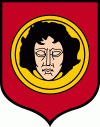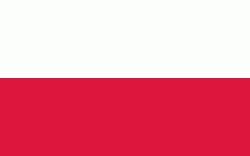Głowno is a town and community in Poland, in Łódź Voivodeship, in Zgierz County, about 25 km northeast of Łódź. The town administratively belonged to the Łódź Voivodeship from 1975 to 1998. According to data from 2020, the city had 13,961 inhabitants.
Although the first settlement at the site of present-day Głowno is thought to have appeared in the 11th century, the first town was organized in the early 15th century near a trade route from the Duchy of Masovia, a Polish fief, to the Polish Kingdom. Rawa Mazowiecka feudal lord and Sochaczew podczaszy (deputy cup-bearer) Jakub Głowiński founded Głowno's first Roman Catholic church, which was consecrated on March 11, 1420 as the Church of St. Jacob. On Jakub's request, Duke Siemowit V of Masovia granted city rights under Kulm law. The city rights have been maintained until the modern day, with an interruption between the years 1870–1925.
Upon incorporation of the Duchy of Rawa into the Kingdom of Poland as a reverted fief in 1462 the Rawa Voivodeship was established, which was also part of the larger Greater Poland Province of the Polish Crown. Głowno belonged to that voivodeship until 1793 or the Second Partition of Poland. In 1504 a fire destroyed a large part of the city, whereupon King Alexander Jagiellon suspended taxation for its inhabitants for ten years. In 1522 second fire struck and King Sigismund I the Old granted another 10 year taxation reprieve. Because of the Deluge and the rebellion under Jerzy Sebastian Lubomirski, the population severely diminished, and in 1676, only 74 people lived in Głowno, but under the rule of King John III Sobieski the town population recovered somewhat. During the Great Northern War the town and church were ransacked by Saxon and Swedish troops, including a short but devastating stay by king Charles XI of Sweden and his mounted troops in 1704, recorded by the parish priest of the Saint Jacob church. Consequently, in 1710, an epidemic struck, killing inhabitants from local nobility to town peoples, and town was almost finished. Finally the city was sold to Baltazar Ciecierski, stolnik of Drohiczyn. After the 1730s and perhaps closer to 1750, the new owner started settling Jews there, in order to create income from textile industry. In 1741 King Augustus III of Poland granted market privileges to Ciecierski's town, allowing the town to hold four annual fairs during a calendar year. In 1775 there were 60 tax paying households in the town.


















